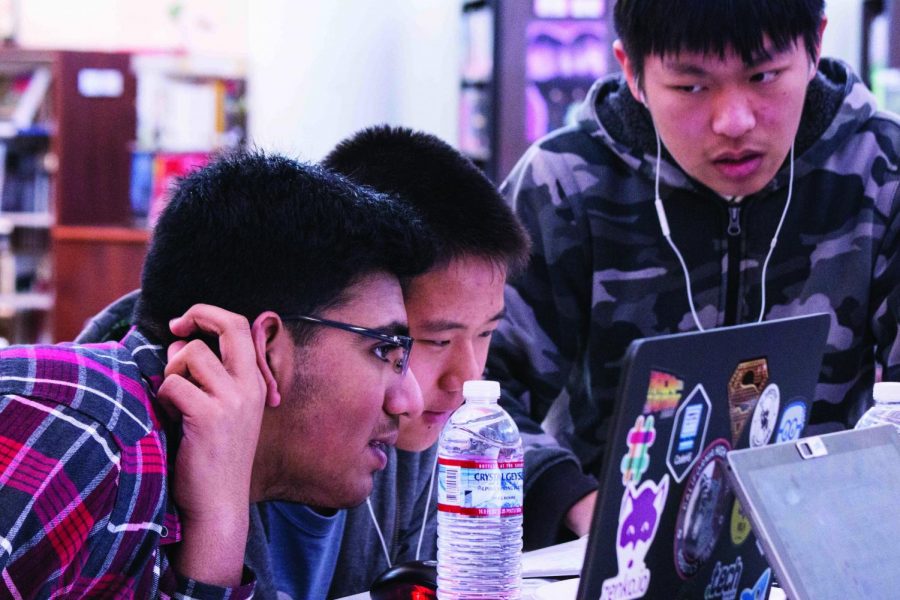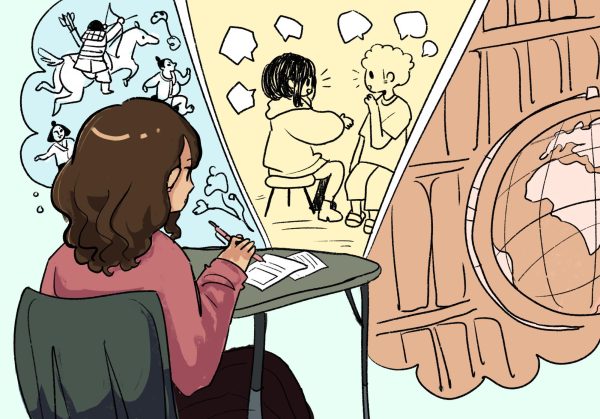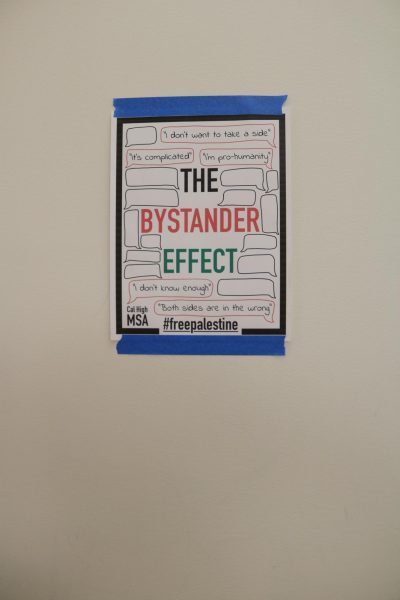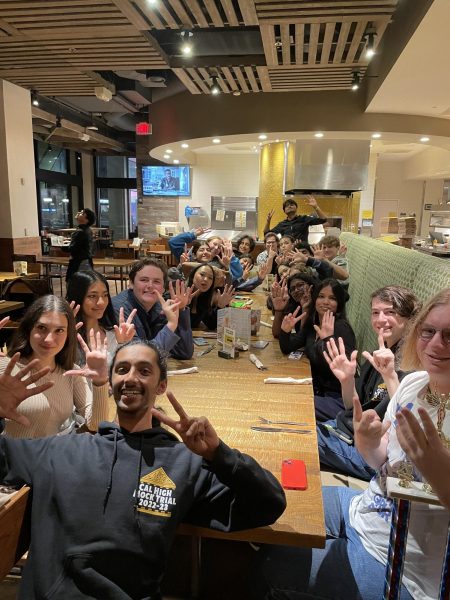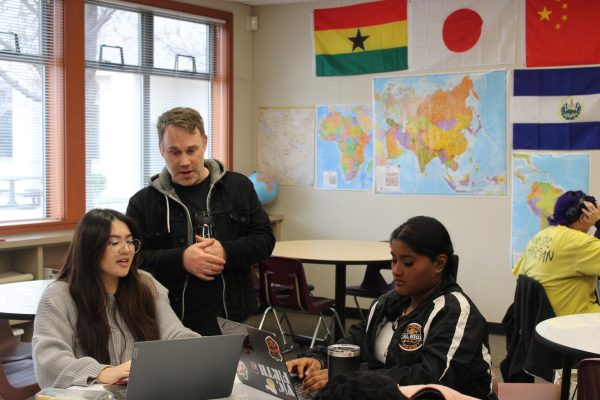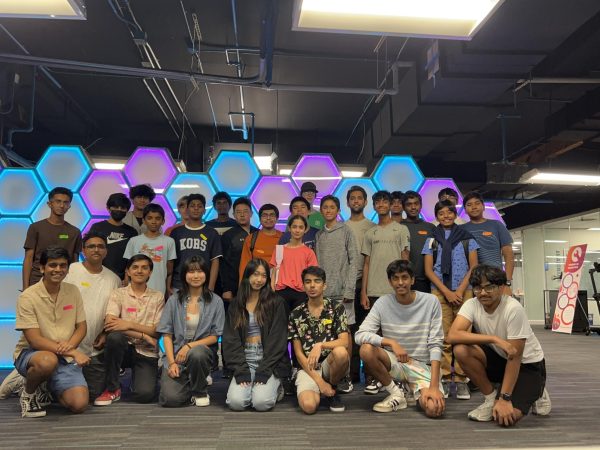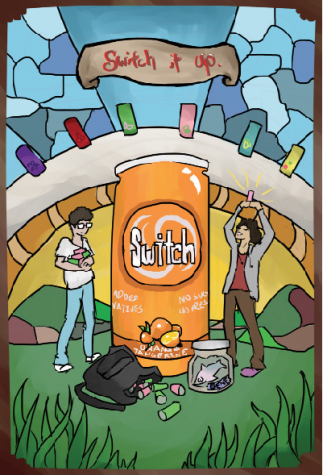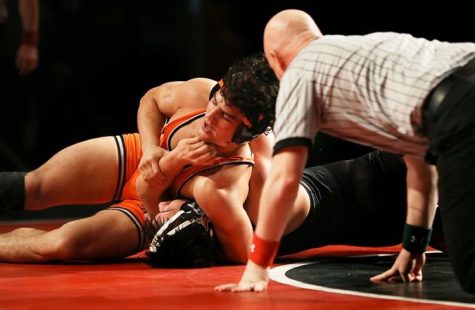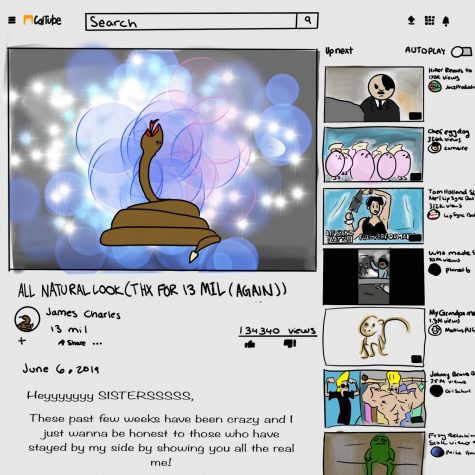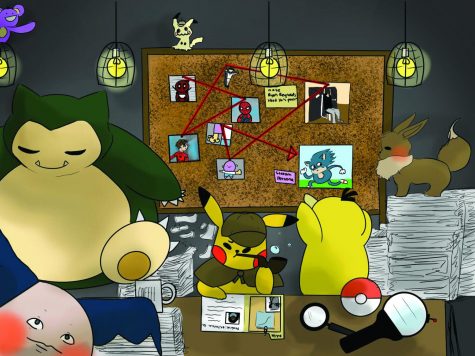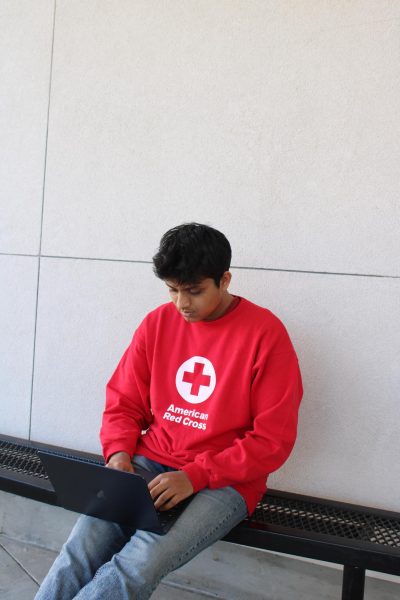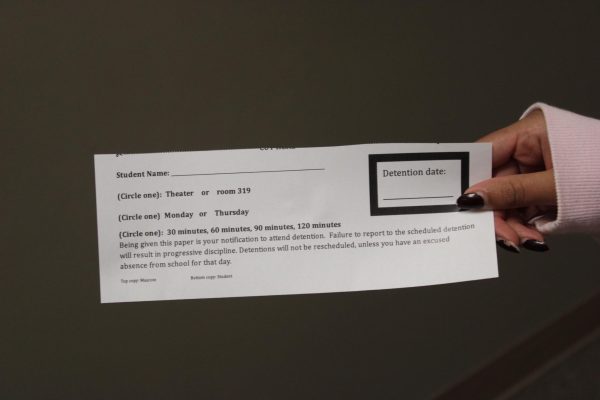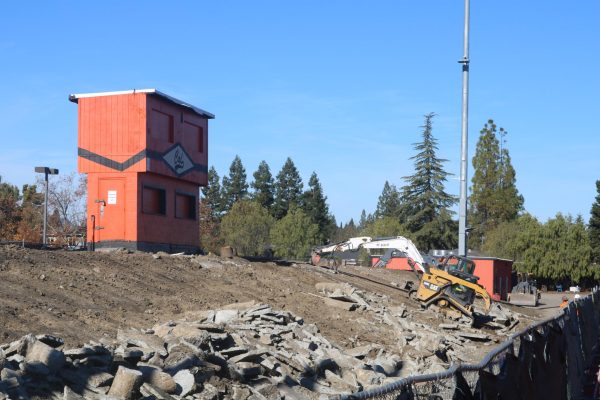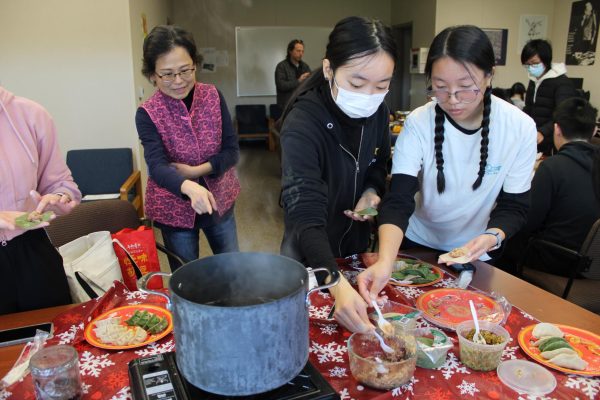Hackathon sparks student imagination
Sophomore Chris Liu is testing the fruit of his labor.
On the screen of his laptop is a 3D model of a plant cell, every organelle visible to the eye from the cell walls to the mitochondria.
The interactive model was created by his team at the San Ramon Valley Unified School District’s inaugural Imagineering Hackathon on Jan 27 in the Cal High library.
Liu explains that the team had used one of the A-Frame web framework, a software used to create web applications, to create a virtual reality model of a plant cell.
The cell itself was modeled in a free piece of software called Blender, used to create and sculpt 3D models.
“It’s like 3D Photoshop,” said sophomore Andrew Moshkovich, a group member.
Liu and his team were some of the 60-plus students district wide who participated at the Imagineering Hackathon. High school and middle school students joined them with their own teams for a day of experimentation, learning, and fun.
For this particular hackathon, the focus was on HTML, a versatile programming language often used to create web pages and web applications.
The language is used commonly in web design and video game development. But teams were not required to use HTML, and were given free reign over the direction of their projects.
Attendees were matched between three categories based on prior experience. The teams were given the freedom to pursue whatever project they wanted from 10 a.m. until 3 p.m.
After each project was judged by a panel and certain groups won prizes based off of the merits on their projects.
Some of these prizes included free copies of games like “FIFA 17” and “SimCity.” The grand prize were a set of Beats headphones for everyone in the winning group.
The event was organized with the help of Cal junior Shirin Afrakhteh. She said she received the opportunity to help run the event from Cecilia Brear, the district’s Imagineering program manager.
Afrakhteh said one of her goals for the hackathon was to bring light to more creative aspects of computer programming that she feels classes at school neglect.
She recalled teaching herself programming in middle school.
“I would procrastinate on homework by watching Java [a programming language] videos on Khan Academy,” Afrakhteh said.
She felt that there was a very creative aspect to programming that allowed for the expression of self and other artistic qualities, but she was disappointed in the classes provided at school.
Afrakhteh ended up dropping AP Computer Science in a matter of weeks, but her enthusiasm for the arts in conjunction with STEM were rekindled by positive experiences with hackathons.
Afrakhteh was given the opportunity to host the hackathon though a chance encounter with Brear.
“My whole goal was actually to do things that were more innovative,” Brear said.
She paid attention to and wanted to try activities that companies did in order to better prepare kids at school for what they would experience out of school.
Brear noticed that many companies would run or attend hackathons in order to pick up on any spontaneous innovations that could have happened at the event.
Brear saw a lot of value in hackathons and wanted to host one of her own for district students.
It was then that Brear’s daughter met Afrakhteh at one of her Imagineering classes, and the inception of the Imagineering hackathon began.
Brear and Afrakhteh share commonalities in philosophy, most notably in their emphasis on art in STEM.
“When companies build products… the best ones are the ones that are creative, visually appealing and easy for people to use,” Brear said. “The artistic side of products is what separates peoples products and is what pushes them to the top. ”
Brear also believes that there is a lot of art involved in maths and sciences. She highlights various examples within the Imagineering classes she teaches in the district.
Together, the two were able to get sponsors from various companies, such as Blueword AI, Veriflow, Sentient Technologies, Slack, Electronic Arts, Canary, Me To You Box, Noodles & Company, and Starbucks.
Some students with much more experience opted to be mentors for the hackathon, watching over the various group and aiding them in approaching their problems.
Cal senior Anelise Cho is one of these more experienced students who decided to mentor. She has had experience with hackathons before and is an organizer for Superposition II, an all-girls hackathon in the Bay Area.
Another mentor was Luke Hentschel, a junior at Diablo Valley College. Like Cho, Henschel has had prior experience with various hackathons.
While he went great lengths to help out students, Henschel humbly stated otherwise.
“I just tell them to look it up on Google,” Henschel joked. “That’s how we do it in the real world.”
The teams all presented very unique projects, each with their own flair.
Some presented ones with real life application and practicality such as the project created by the team who called themselves The Brogrammers.
The project itself was a website-esque interface created to increase productivity. It allowed for simpler navigation of databases and better schedule management.
Some projects were much more fun and lively, such as the website seventh grader Charlotte Law put together with her team for dog lovers.
“We put all our heart into this website,” said Law.
Law’s group ran into the difficulties of creating a website fairly early in the process, noting that even basic features can be hard to implement.
Overall, it seems that everyone took away something from the event, regardless of whether they won something or not.
Afrakhteh knew having a hackathon would be a positive influence on the community, but she said she never realized how much of a positive effect it would have.
“A younger student came up to me after and told me it was his best day ever,” said Afrakhteh. “That’s the best part of this whole event- putting on something so positive and exciting for these students.”
